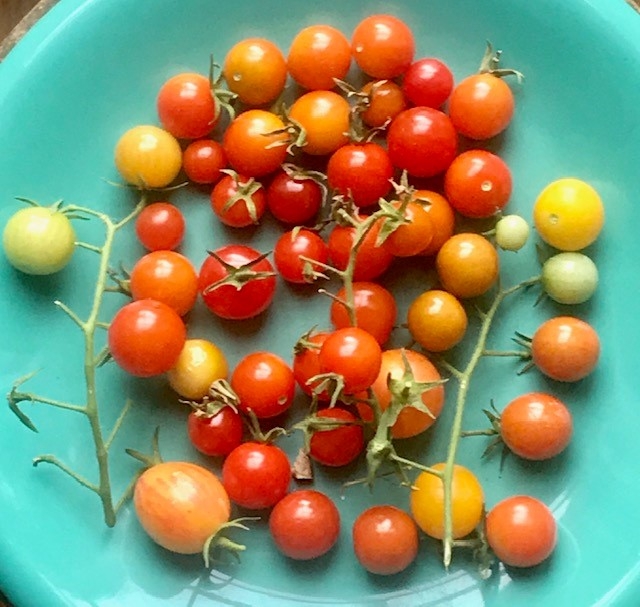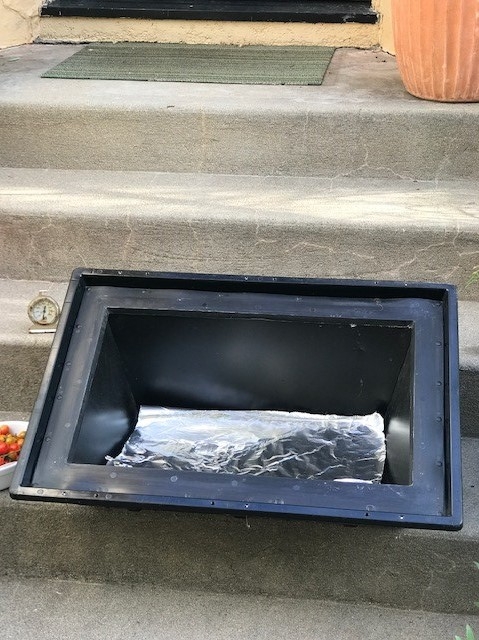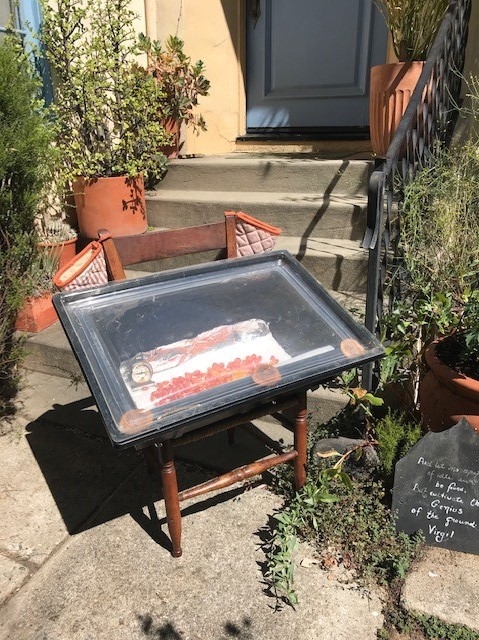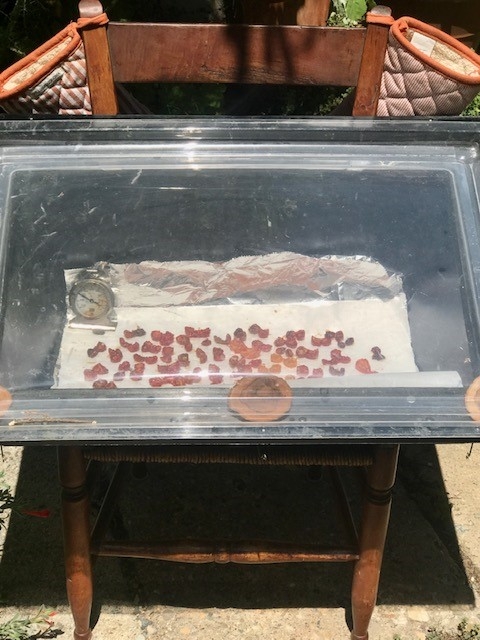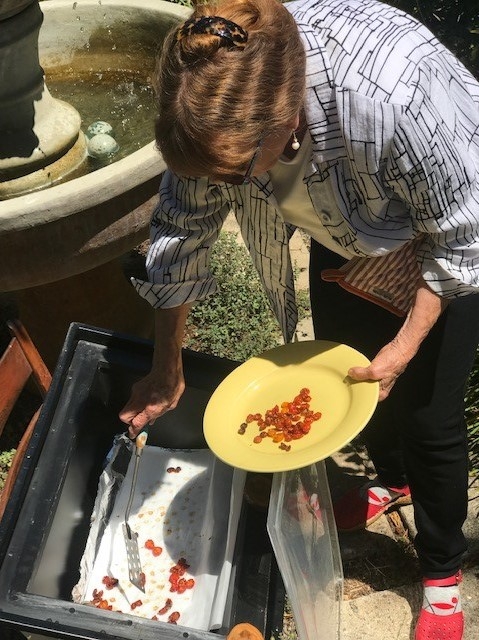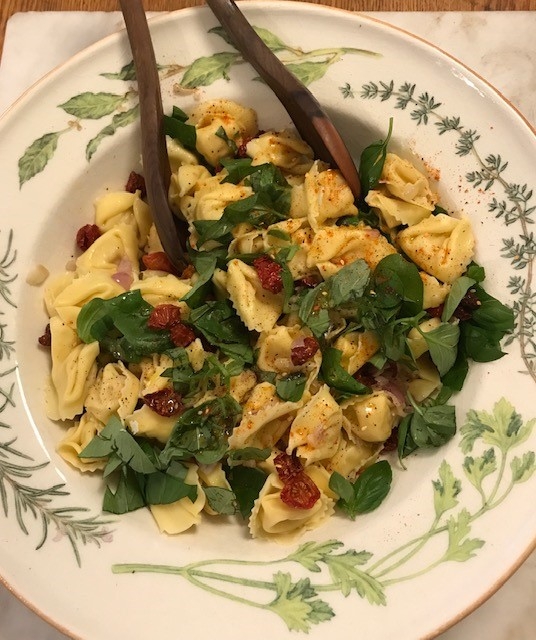Years ago, I learned that what's good for the solar-powered butterflies is good for solar drying. On a hot morning last week, I looked out my window and saw a Monarch and two Swallowtails in the herb garden-the signs of a perfect day for drying outdoors in my solar oven.
For two weeks the morning fog had kept me from drying jerky and fruit, but on this day, all the conditions were right. No humidity, an outdoor temperature of 80 plus degrees by 9:30 A.M., and a slight breeze, albeit a hot one.
I've dried food naturally for decades, sometimes in my herb shed in a cupboard with removable screens, sometimes on racks, and sometimes on screens outdoors. But when I dried food outdoors, insects were always a challenge. I kept my fruit covered with lightweight nylon or cheesecloth, but somehow the bugs always managed to get in.
About ten years ago I attended a solar cooking class in San Luis Obispo. Most of the foods and preserves had been baked in cardboard and aluminum foil ovens, but I wanted something a bit sturdier as well as bug and weather tight.
I did some online research and found a solar society that also carried a selection of ovens. I chose a simple one with a thick plexiglass lid, and angled sides, so as to capture the sunlight more easily. It also came with side aluminum panels, which have long since vanished. It's ok though, the oven does fine without them, but I do line the bottom and an inch or so up the sides with aluminum foil.
A small chair is the perfect perch for my oven. I move it outdoors into the herbal courtyard and set the oven on top facing the sun. I keep a thermometer inside and oven mitts nearby, it gets HOT in there and I've burned myself more than once.
Usually, the best time for cooking is from 10 A.M. to about 2 P.M., when the day is the hottest and the sun high. I check the tomatoes a couple of times an hour, stir it as needed, and move the oven so it always gets the full benefit of the sun.
Since the oven heats up slowly, the tomatoes can begin drying from the inside out. They never toughen on the outside first. When the oven reaches about 180°F, I slightly prop open the lid to allow excess heat to escape and keep the air moving.
I love the deep, rich umami taste of dried tomatoes in my cooking and usually grow Romas for sun dried tomatoes. But on the perfect day for solar, I had only my small ‘Bumblebee Sunrise,' cherry, and ‘Orange Hat' tomatoes. I picked and then rinsed them in cold water. With a paper towel I patted them dry, sliced and spread them in one layer on the floor of the oven.
On this warm morning, the oven had reached a temperature of nearly 200°F. I opened the lid, stirred the still juicy and plump tomatoes slightly, and used some small rounds of wood as a prop to allow the excess heat to escape. By 11:30 A.M. the tomatoes looked shriveled and just before 2 P.M. they were perfect. They were like thin leather, I could bend them easily, and they tasted divine.
My training as a UC Master Food Preserver introduced me to using a dehydrator as a way to dry food. I'm planning to buy one, but I'll still turn to my solar oven for a big share of my drying.
ENJOY!!
